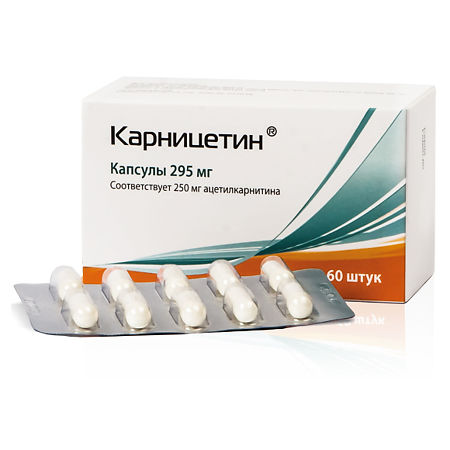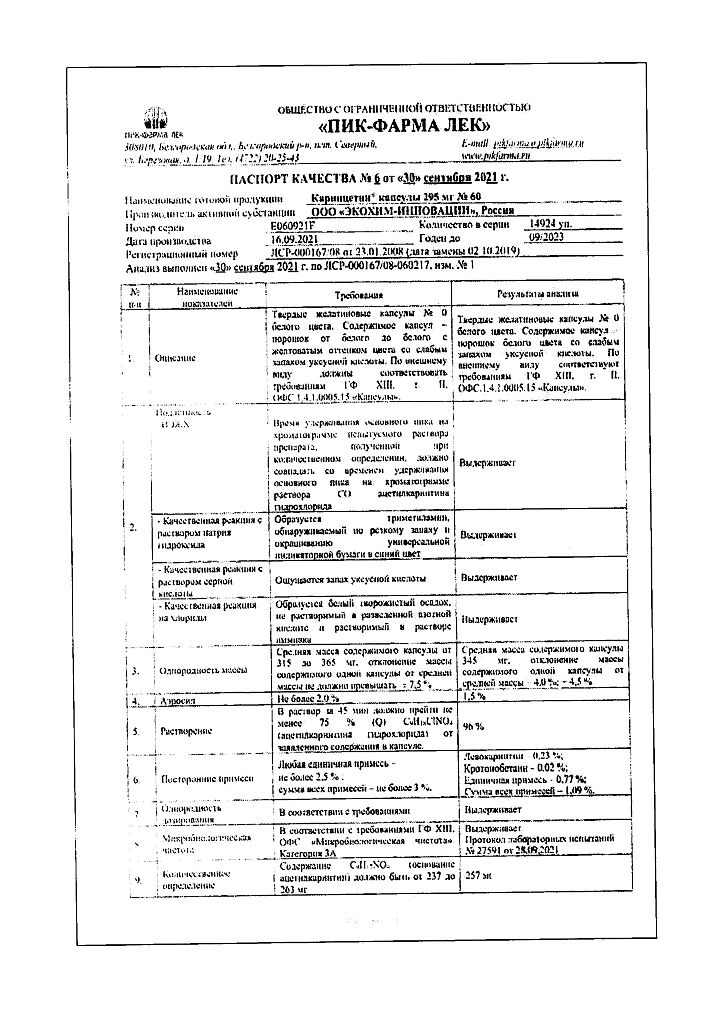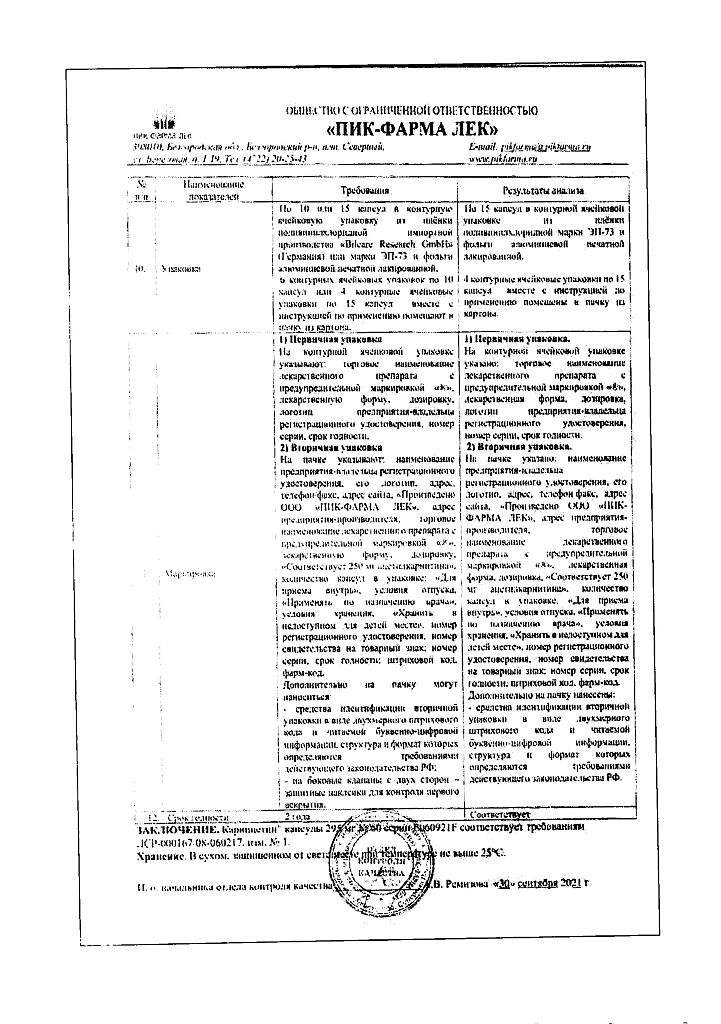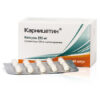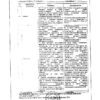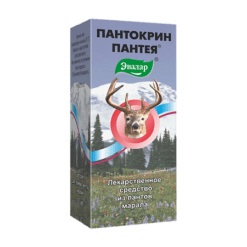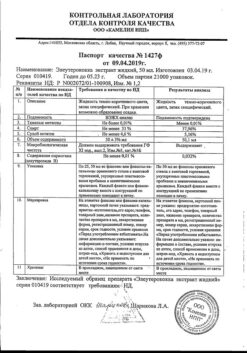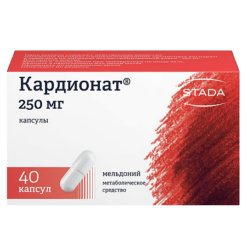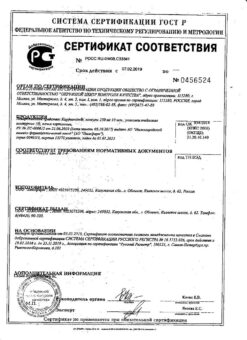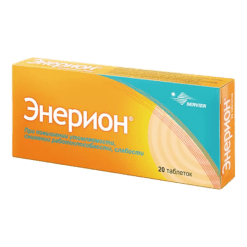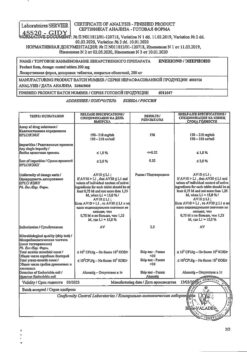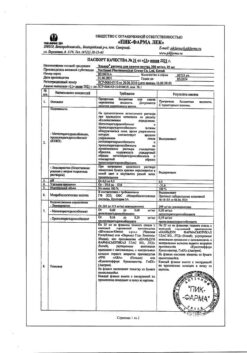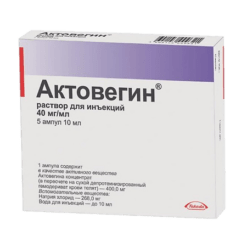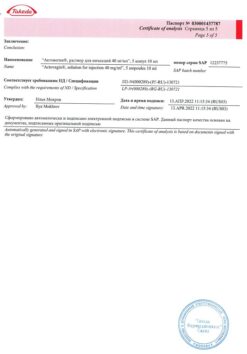No products in the cart.
Carnitetine, capsules 295 mg 60 pcs
€23.40 €19.50
Description
Acetyl-L-carnitine (ALA), a natural biologically active substance, under physiological conditions is present in the body in various organs and tissues, including the CNS and participates in the metabolism of fatty acids and carbohydrates.
The pharmacological and biological action of ALA is largely due to the metabolic effects of L-carnitine and the acetyl group contained in its composition. Acetyl-L-carnitine (ALA), the biologically active form of L-carnitine, a key substance in the process of fat catabolism and energy formation in the body. ALA is synthesized in the brain tissue, liver and kidneys from L-carnitine with the participation of the enzyme carnitine acetyltransferase.
Because ALA delivers activated acetate directly to the mitochondrial matrix to form acetyl-CoA, which is involved in the tricarboxylic acid cycle, without additional energy expenditure, it is a readily available substrate to trigger energy-dependent metabolic processes in mitochondria. By providing a full energy supply to the body with less tissue oxygen consumption, ALA protects brain tissue from ischemia.
Owing to its structural similarity to acetylcholine, ALA has a cholinomimetic effect and also shows neuroprotective properties. It increases the cellular concentration of asparagic and glutamic acid and taurine. With long-term use, it increases the density of N-methyl-D-aspartate receptors in the hippocampus, cortex and striatum and inhibits their decrease under aging conditions. ALA enhances the effects of serotonin and also protects brain cells from the neurotoxic effects of ammonia and glutamate.
The results of experimental studies have shown that ALA has anti-amnesic activity, the ability to improve learning processes and parameters of non-associative memory and have a positive effect on mnastic functions in the experimental model of Alzheimer’s disease without causing sedative and muscle relaxant side effects.
ALA increases the production of energy, which is a readily available substrate for the triggering of energy-dependent metabolic processes in the mitochondria. It stimulates the synthesis of proteins and phospholipids for building membranes and improves regeneration processes.
In pathology it has a neuroprotective effect, especially in relation to neurons and their organelles (mitochondria) and neurotrophic effect by modulating the activity of nerve growth factor (NFG). It has antioxidant and membrane stabilizing effects. ALA can accelerate nerve cell regeneration in traumatic and endocrine damage of peripheral nerves in experimental models of polyneuropathy in diabetes.
The remarkable effect of ALA is to slow the aging process by enhancing the transport of fatty acids into the mitochondria and maintaining their function at the level of a young body. ALA can accelerate nerve cell regeneration in traumatic and endocrine damage of peripheral nerves in experimental models of diabetes.
Indications
Indications
Initial dementia of the Alzheimer’s type (Alzheimer’s disease) and cerebrovascular dementia;
Peripheral neuropathy of various etiologies;
Primary and secondary involution syndromes against the background of vascular encephalopathies;
Reduced mental performance, to improve concentration and memory.
Pharmacological effect
Pharmacological effect
Acetyl-L-carnitine (ALA), a natural biologically active substance, present in the body under physiological conditions in various organs and tissues, including the central nervous system, is involved in the metabolism of fatty acids and carbohydrates.
The pharmacological and biological effects of ALA are largely due to the metabolic effects of L-carnitine and the acetyl group included in its composition. Acetyl-L-carnitine (ALC), a biologically active form of L-carnitine, a key substance in the process of fat catabolism and energy production in the body. ALA is synthesized in brain tissue, liver and kidneys from L-carnitine with the participation of the enzyme carnitine acetyltransferase.
Since ALA delivers activated acetate directly into the mitochondrial matrix to form acetyl-CoA, which participates in the tricarboxylic acid cycle, without additional energy expenditure, it represents a readily available substrate for triggering energy-dependent metabolic processes in mitochondria. Due to the full energy supply of the body with less oxygen consumption by tissues, ALA protects brain tissue from ischemia.
Due to its structural similarity to acetylcholine, ALA has a cholinomimetic effect and also exhibits neuroprotective properties. It increases the cellular concentration of aspartic and glutamic acid, as well as taurine; with long-term use, it increases the density of N-methyl-D-aspartate receptors in the hippocampus, cortex and striatum and prevents a decrease in their density during aging. ALA enhances the effects of serotonin and also protects brain cells from the neurotoxic effects of ammonia and glutamate.
The results of experimental studies have shown that ALA has anti-amnestic activity, the ability to improve learning processes, non-associative memory indicators, and have a positive effect on mnestic functions in an experimental model of Alzheimer’s disease, without causing side effects of a sedative and muscle relaxant nature.
ALA increases energy production by being a readily available substrate for launching energy-dependent metabolic processes in mitochondria. Stimulates the synthesis of proteins and phospholipids to build membranes, improves regeneration processes.
In pathology, it has a neuroprotective effect, especially in relation to neurons and their organelles (mitochondria), as well as a neurotrophic effect due to modulating the activity of nerve growth factor (NGF). Has antioxidant and membrane-stabilizing effects. ALA can accelerate the regeneration of nerve cells during traumatic and endocrine damage to peripheral nerves in experimental models of polyneuropathy in diabetes.
ALA has a noticeable effect on slowing down the aging process by enhancing the transport of fatty acids into mitochondria and maintaining their functioning at the level of a young organism. ALA can accelerate the regeneration of nerve cells during traumatic and endocrine damage to peripheral nerves in experimental models of diabetes.
Active ingredient
Active ingredient
Acetylcarnitine
Composition
Composition
Acetylcarnitine hydrochloride (carnitine) 0.295 g.
Excipients:
microcrystalline cellulose (MCC);
colloidal silicon dioxide (Aerosil A-300);
magnesium stearate – until the mass of the capsule contents is 0.34 g.
Hard gelatin capsules:
capsule composition: gelatin;
glycerol (glycerol);
nipagin (methyl parahydroxybenzoate);
nipazole (propyl parahydroxybenzoate);
sodium lauryl sulfate;
purified water,
titanium dioxide
Pregnancy
Pregnancy
No special studies have been conducted on the possibility of use during pregnancy and breastfeeding;
used only if the expected benefit to the mother outweighs the risk to the fetus.
Breastfeeding should be stopped during treatment.
Contraindications
Contraindications
Individual hypersensitivity to the drug Carnicetine;
Age up to 18 years (efficacy and safety have not been established).
Side Effects
Side Effects
Allergic reactions are possible; nausea, heartburn.
Interaction
Interaction
No cases of drug interactions were noted.
Overdose
Overdose
No cases of overdose have been reported.
Storage conditions
Storage conditions
In a dry place, protected from light, at a temperature not exceeding 25 °C
Shelf life
Shelf life
2 years
Manufacturer
Manufacturer
Pik-Pharma, Russia
Additional information
| Shelf life | 2 years |
|---|---|
| Conditions of storage | In a dry, light-protected place at a temperature not exceeding 25 °C |
| Manufacturer | Pik-Pharma, Russia |
| Medication form | capsules |
| Brand | Pik-Pharma |
Related products
Buy Carnitetine, capsules 295 mg 60 pcs with delivery to USA, UK, Europe and over 120 other countries.

